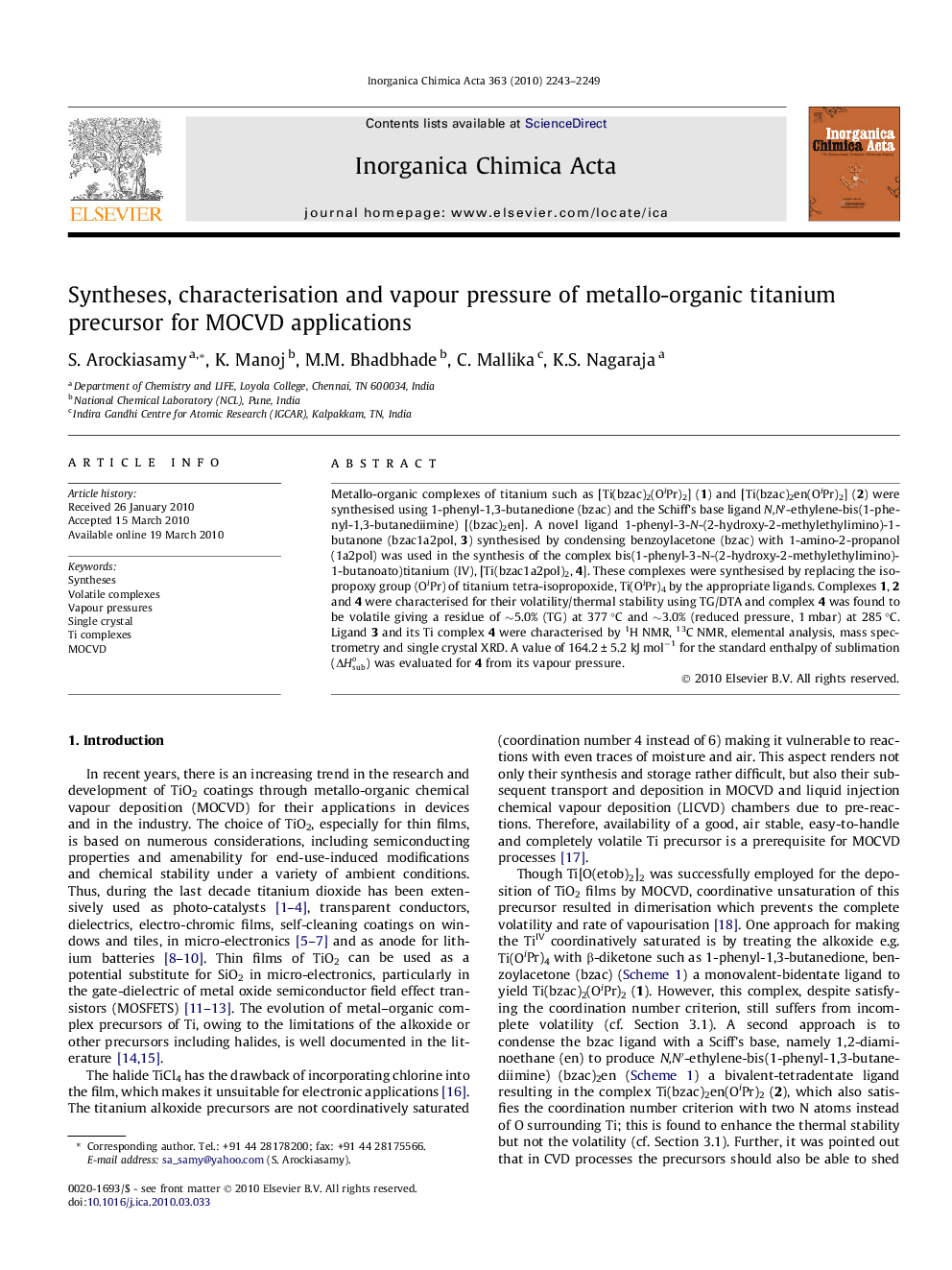| Article ID | Journal | Published Year | Pages | File Type |
|---|---|---|---|---|
| 1312576 | Inorganica Chimica Acta | 2010 | 7 Pages |
Metallo-organic complexes of titanium such as [Ti(bzac)2(OiPr)2] (1) and [Ti(bzac)2en(OiPr)2] (2) were synthesised using 1-phenyl-1,3-butanedione (bzac) and the Schiff’s base ligand N,N′-ethylene-bis(1-phenyl-1,3-butanediimine) [(bzac)2en]. A novel ligand 1-phenyl-3-N-(2-hydroxy-2-methylethylimino)-1-butanone (bzac1a2pol, 3) synthesised by condensing benzoylacetone (bzac) with 1-amino-2-propanol (1a2pol) was used in the synthesis of the complex bis(1-phenyl-3-N-(2-hydroxy-2-methylethylimino)-1-butanoato)titanium (IV), [Ti(bzac1a2pol)2, 4]. These complexes were synthesised by replacing the isopropoxy group (OiPr) of titanium tetra-isopropoxide, Ti(OiPr)4 by the appropriate ligands. Complexes 1, 2 and 4 were characterised for their volatility/thermal stability using TG/DTA and complex 4 was found to be volatile giving a residue of ∼5.0% (TG) at 377 °C and ∼3.0% (reduced pressure, 1 mbar) at 285 °C. Ligand 3 and its Ti complex 4 were characterised by 1H NMR, 13C NMR, elemental analysis, mass spectrometry and single crystal XRD. A value of 164.2 ± 5.2 kJ mol−1 for the standard enthalpy of sublimation (ΔHsubo) was evaluated for 4 from its vapour pressure.
Graphical abstractThree complexes of titanium namely [Ti(bzac)2(OiPr)2] (1), [Ti(bzac)2en(OiPr)2] (2) and [Ti(bzac1a2pol)2] (4) and a tailor made ligand [bzac1a2pol] (3) were synthesised and screened for their volatility using TG/DTA. The volatile Ti complex 4 and its wing ligand 3 were further characterised by single crystal XRD and different spectral techniques. ΔHsubo of Ti complex 4 was evaluated using Clausius–Clapeyron equation.Figure optionsDownload full-size imageDownload as PowerPoint slide
